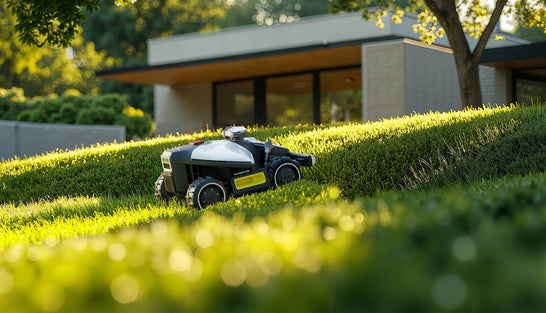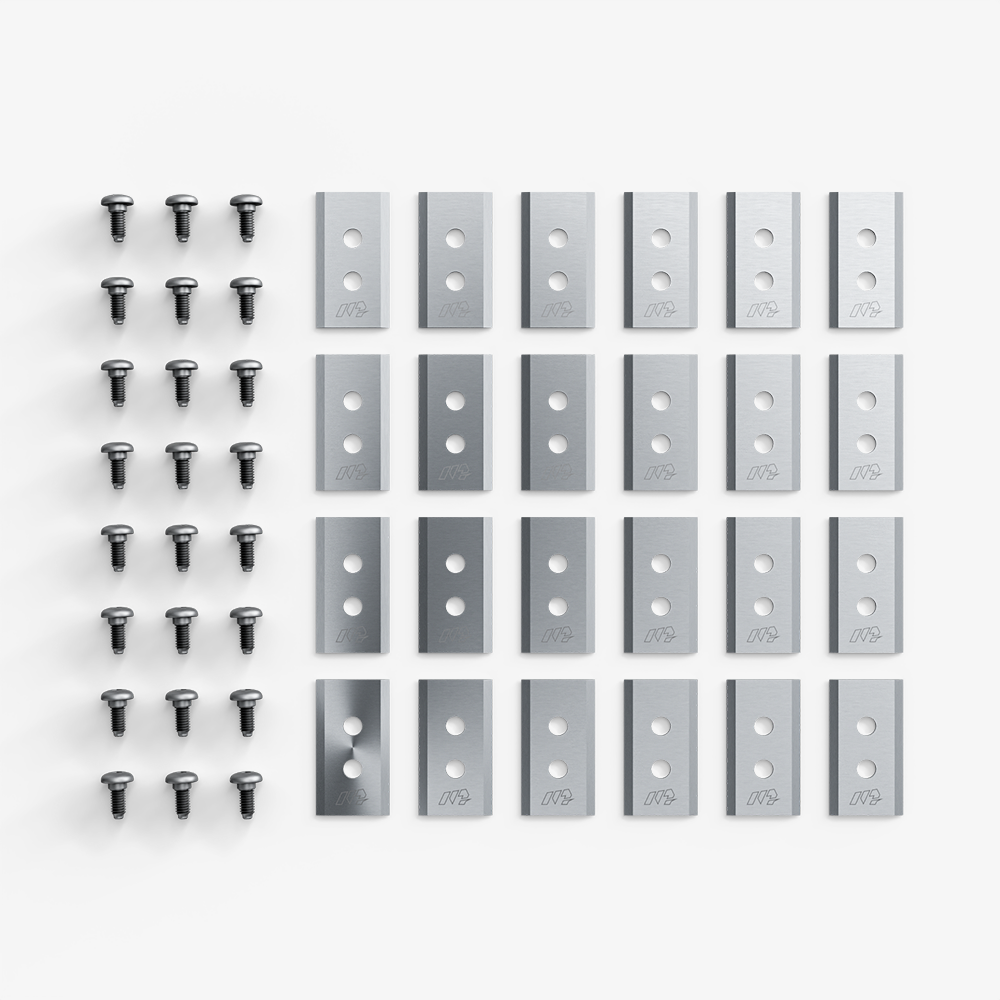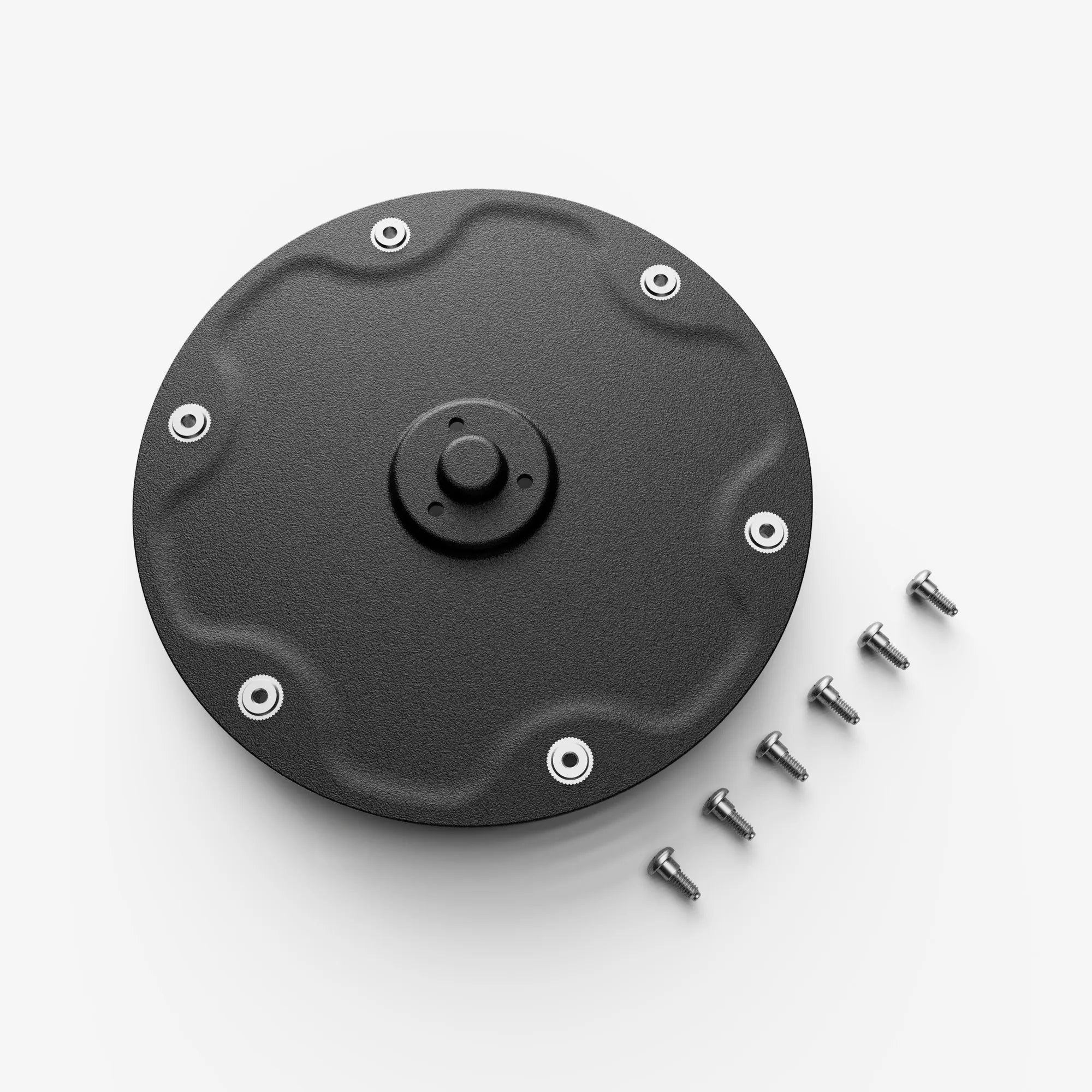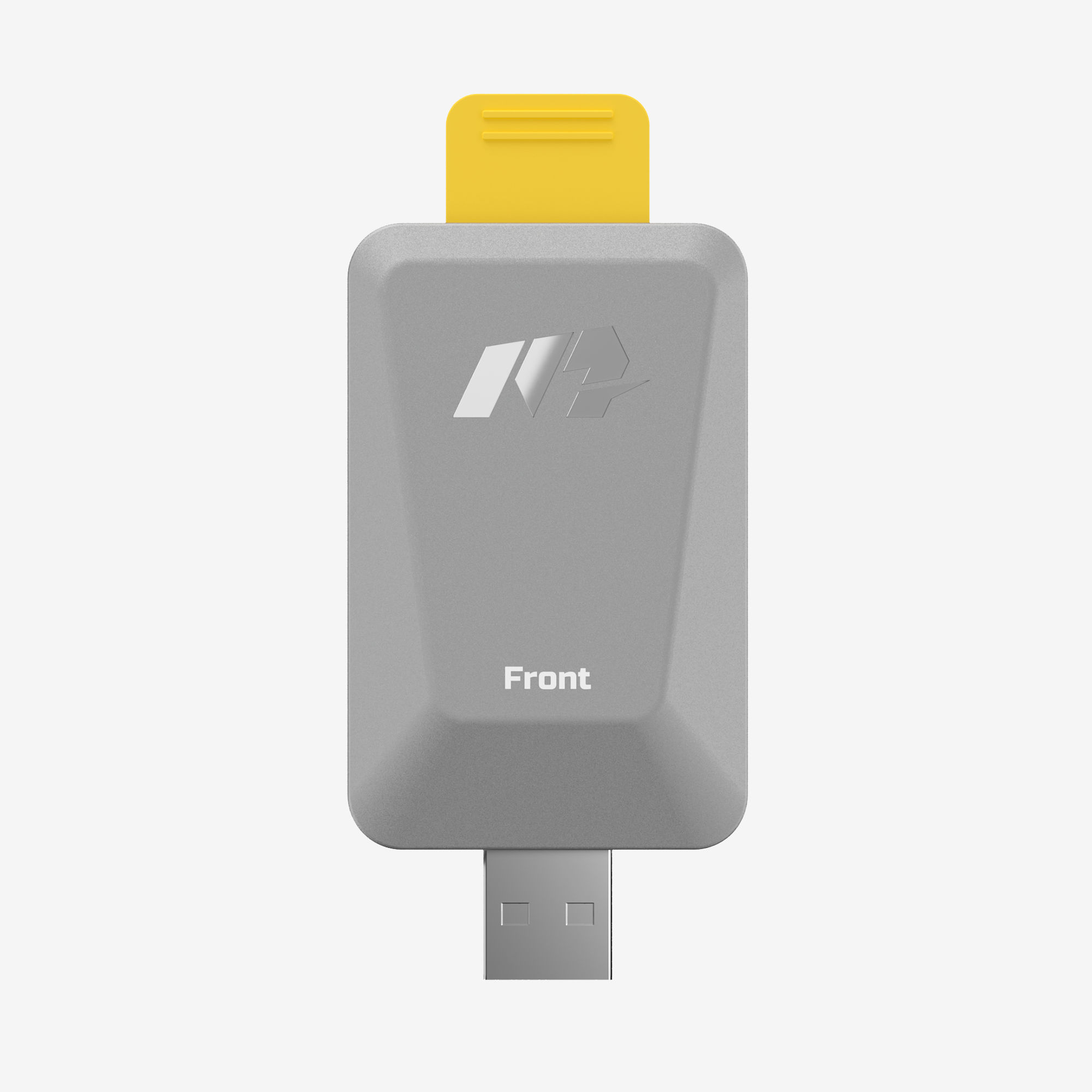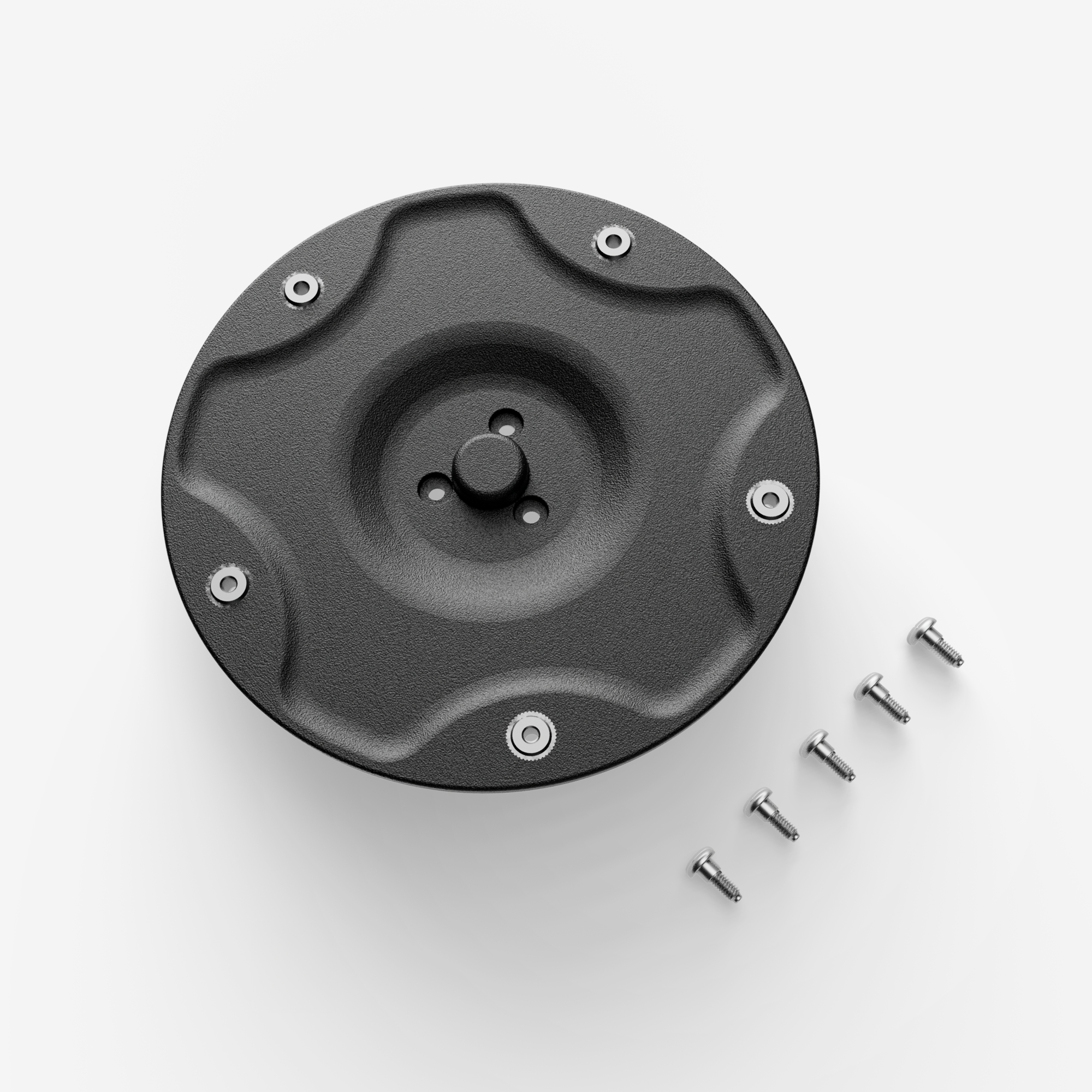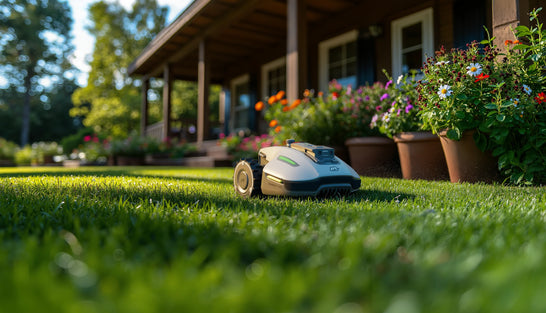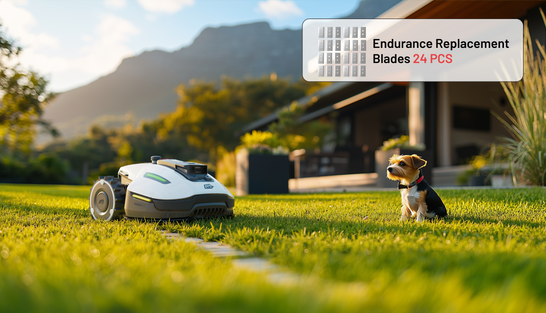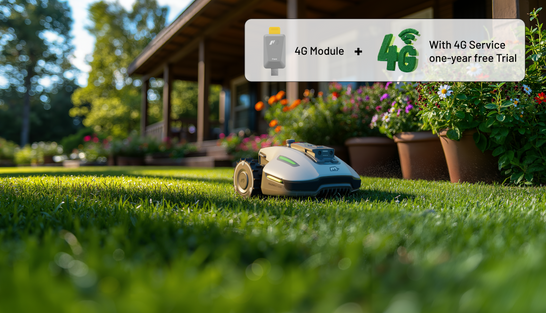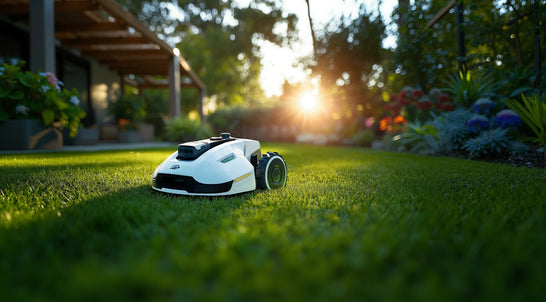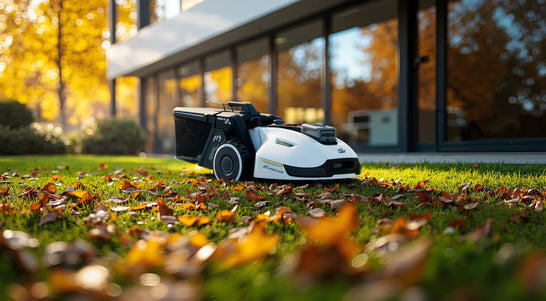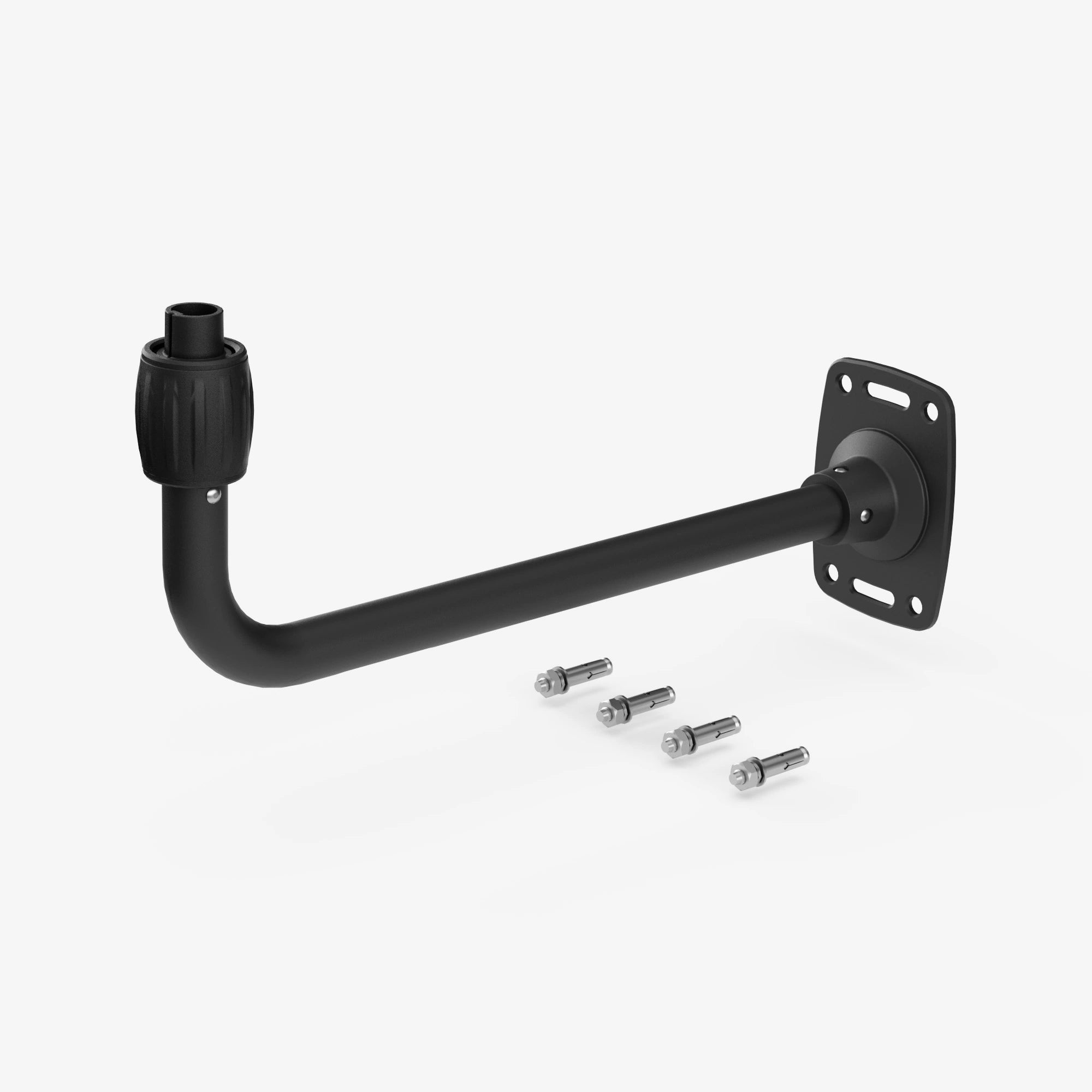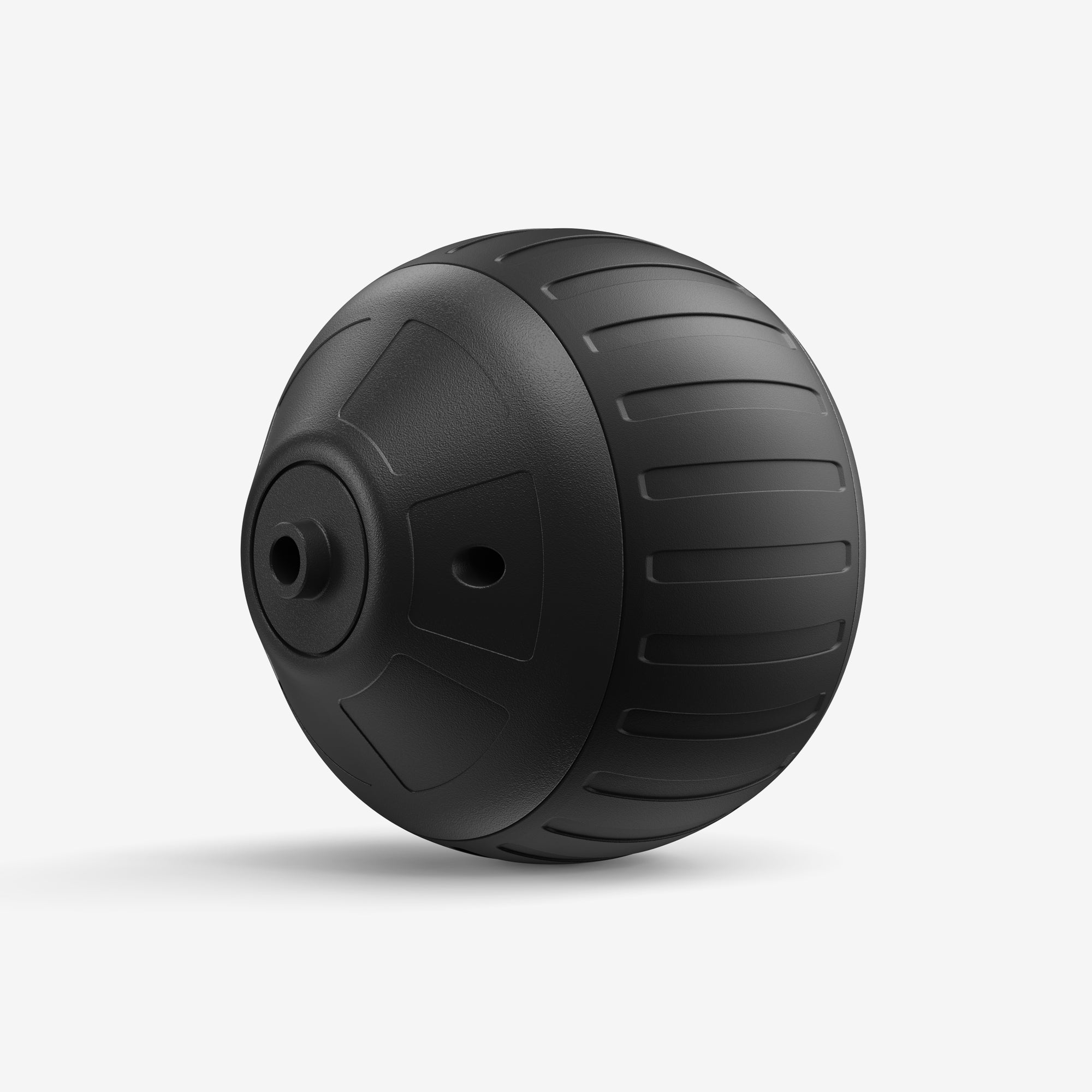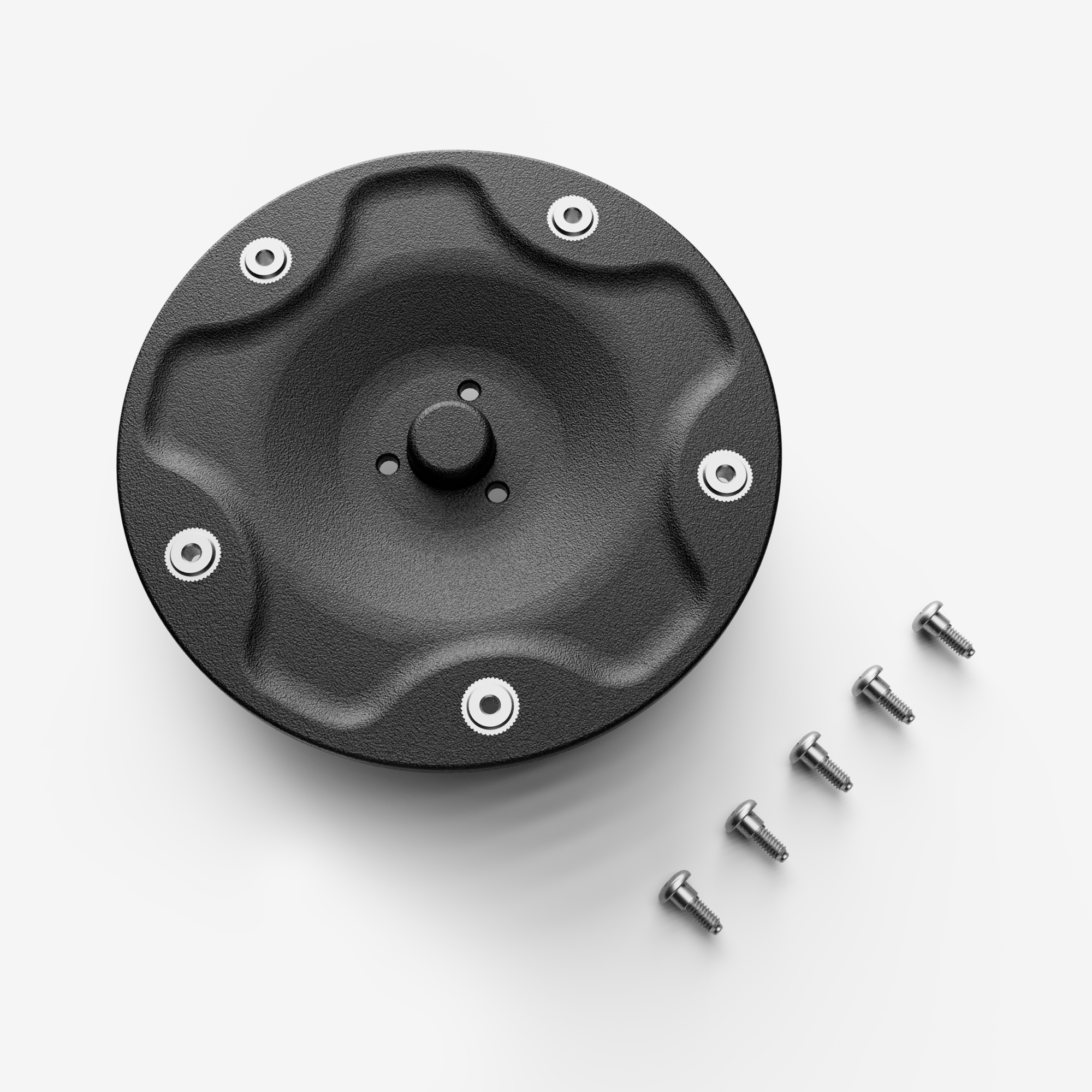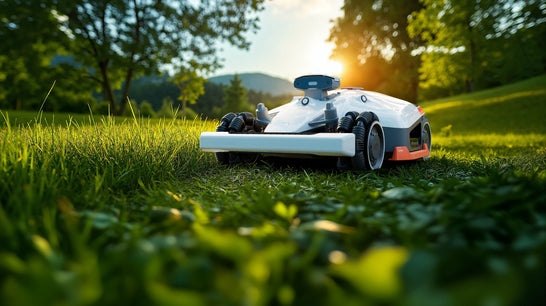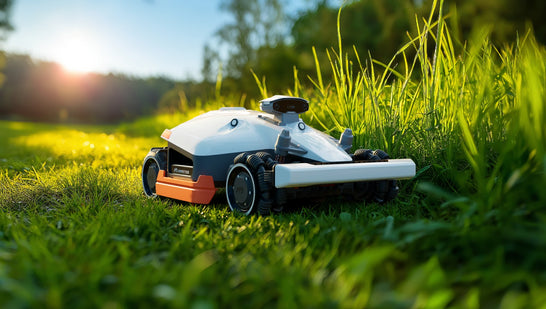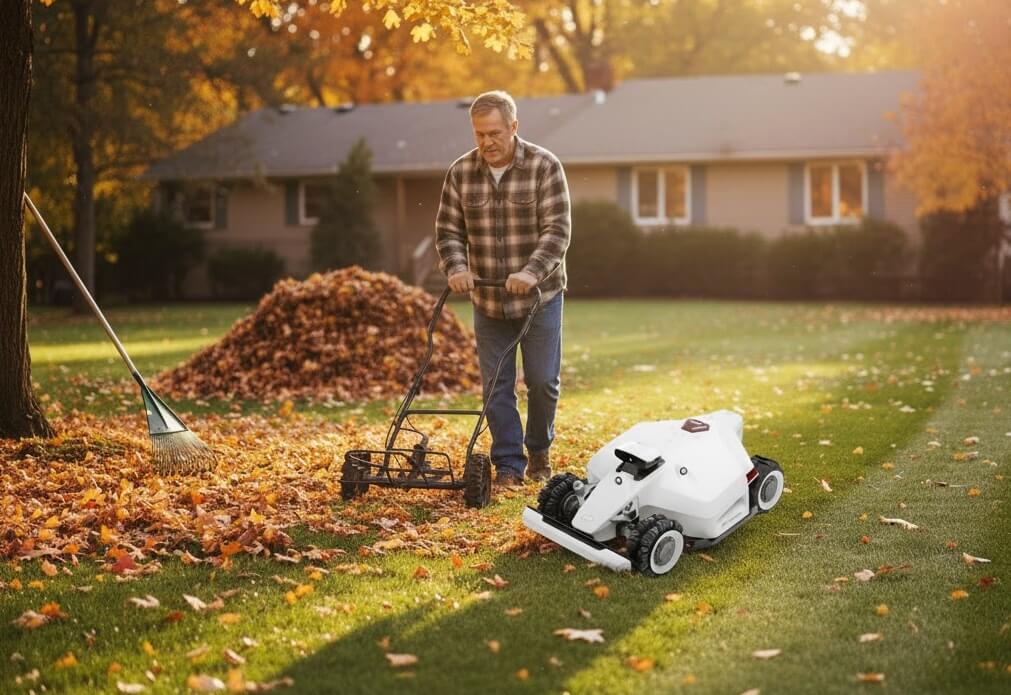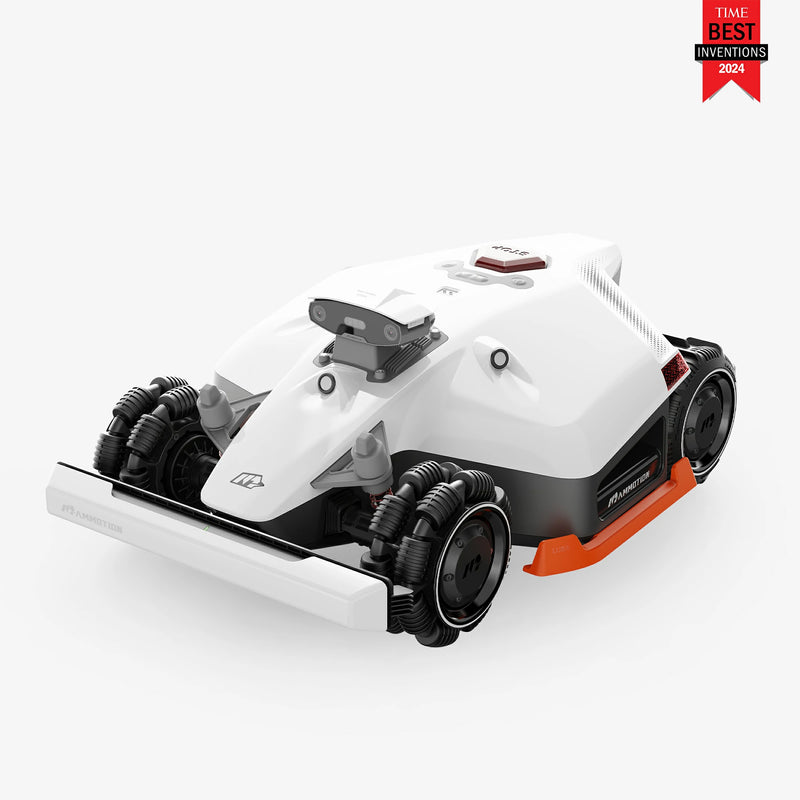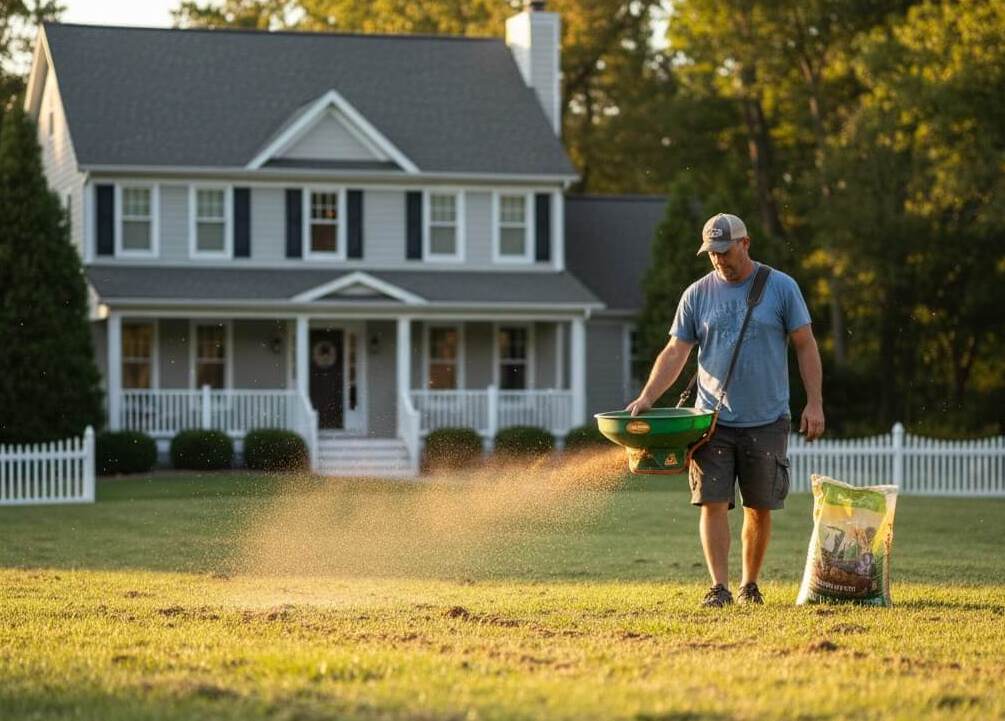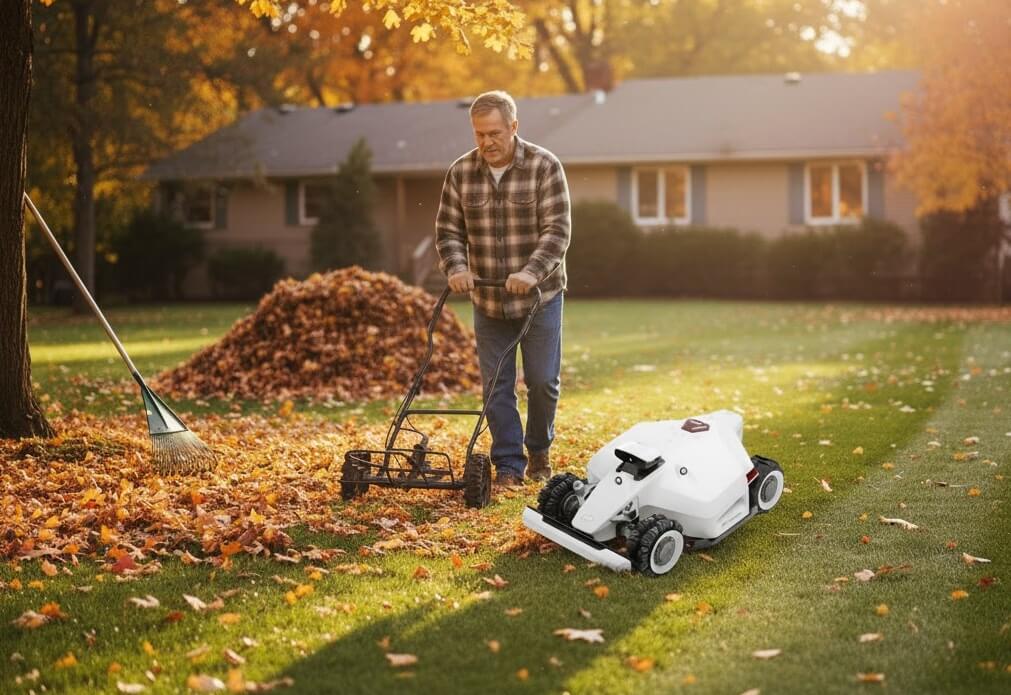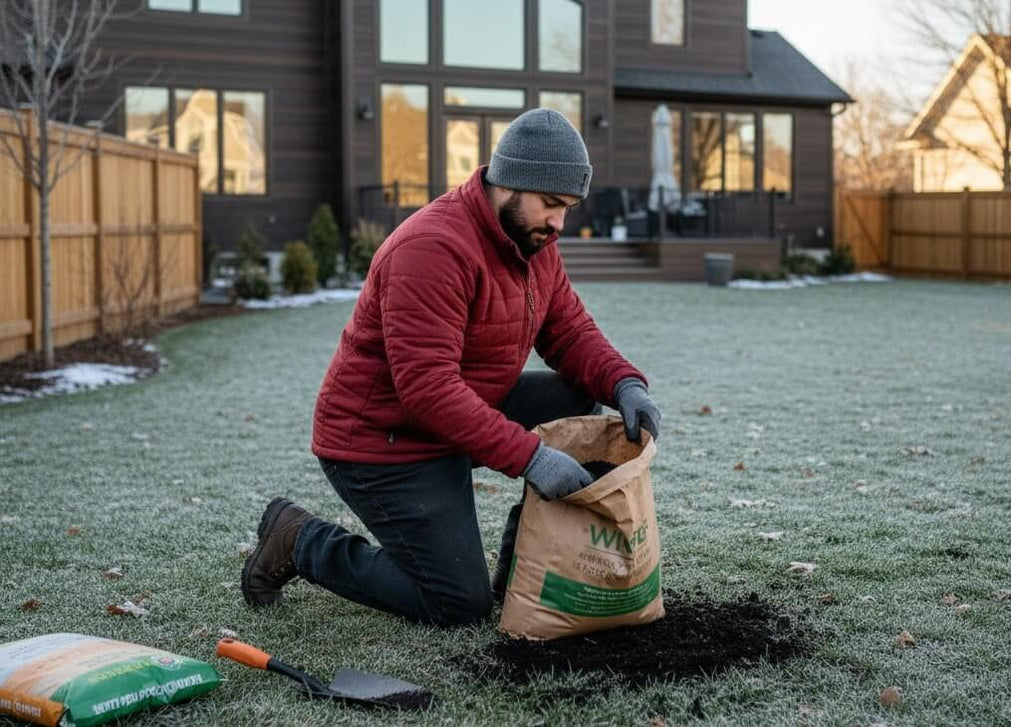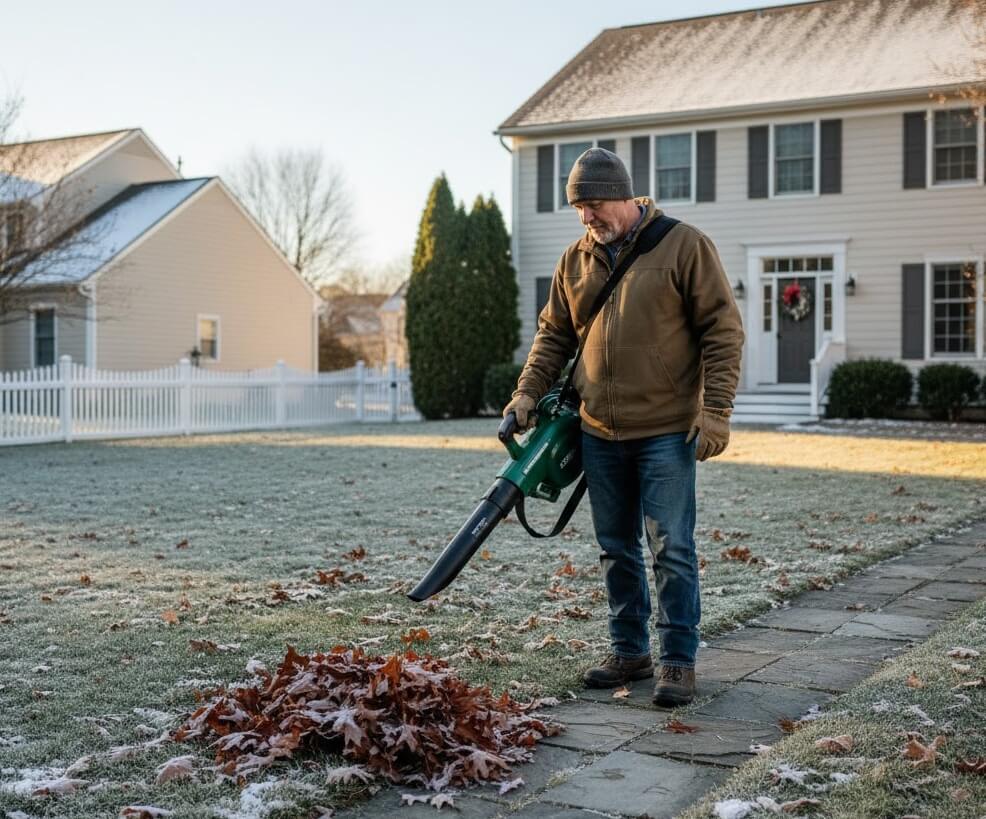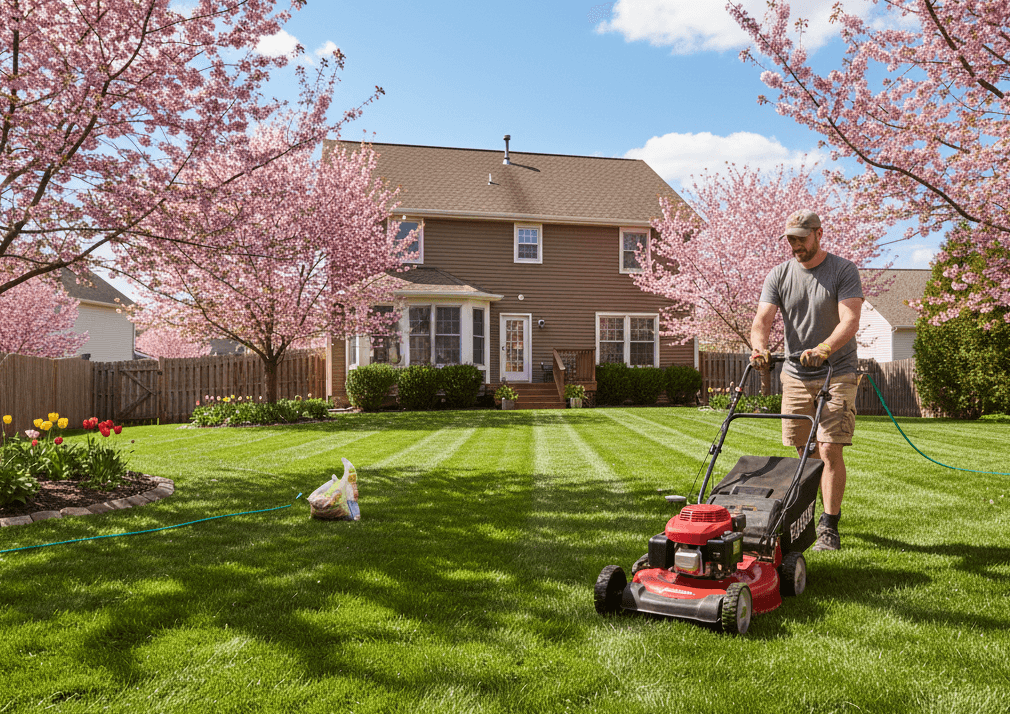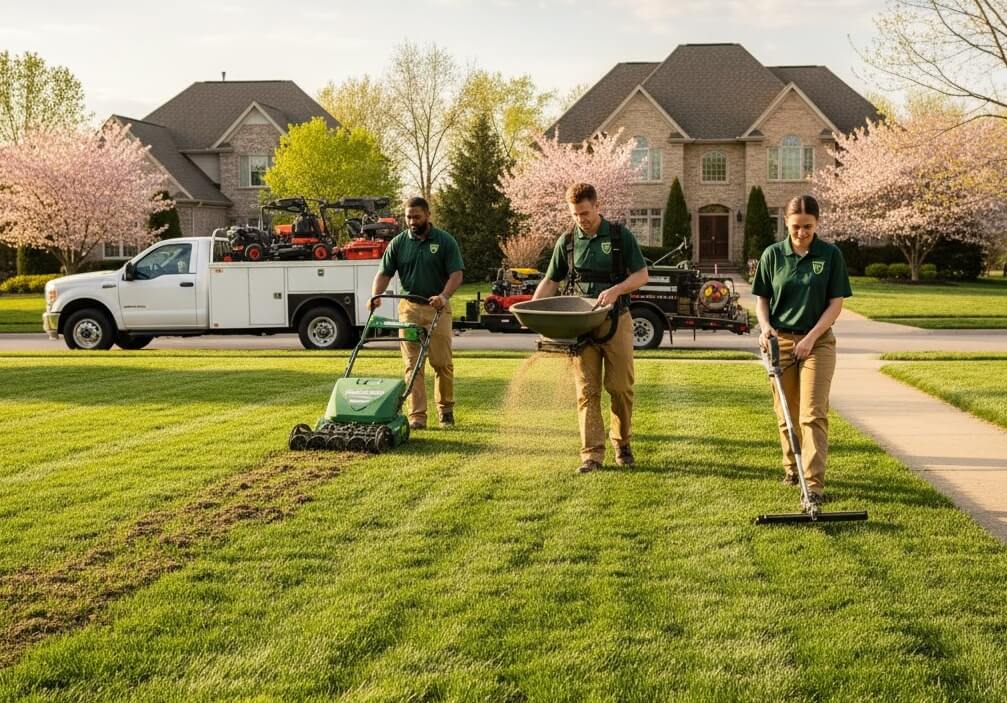Understanding Your Fall Lawn Care Needs
A well-planned fall lawn care schedule sets the foundation for a lush, resilient lawn come spring. While many homeowners slow their yard work as temperatures drop, autumn is actually the most critical season for nurturing root growth, repairing summer damage, and preparing turf for winter dormancy.
Differences Between Spring and Fall Lawn Care
Spring lawn care focuses on stimulating new growth after winter dormancy, while fall lawn care is about strengthening what’s already there. During fall, cool-season grasses such as Kentucky bluegrass, perennial ryegrass, and fescues experience their most active root development. According to the University of Massachusetts Extension, fall is the ideal time for tasks like aeration, overseeding, and fertilization because soil temperatures remain warm while air temperatures cool — perfect conditions for root repair and seed germination.
In contrast, spring treatments often push top growth too early, which can deplete stored energy before summer stress arrives. That’s why a fall lawn maintenance schedule is designed to improve root density, nutrient storage, and disease resistance — ensuring your lawn rebounds stronger each spring.
Key Components of a Fall Lawn Maintenance Schedule
A complete fall lawn care schedule should include:
- Overseeding thin areas to boost turf density
- Fertilizing for root and carbohydrate storage
- Aerating compacted soil to enhance oxygen flow
- Managing leaves to prevent smothering
- Adjusting watering to match cooler conditions
- Controlling pests that overwinter in soil and thatch
- Planning ahead with a regional lawn care calendar
These steps ensure your lawn remains healthy through winter and greens up faster in spring. Modern homeowners often pair traditional lawn care with automation tools — for example, Mammotion robotic mowers can keep mowing heights consistent during the final weeks of fall, evenly distributing mulched clippings that naturally return nutrients to the soil. This kind of precision mowing reduces manual workload and contributes to a balanced fall maintenance routine.
Task 1: Prepare for Overseeding in the Fall
Overseeding in fall rejuvenates thinning turf, improves color, and increases your lawn’s resilience against weeds and drought. The cool temperatures and warm soil of early autumn make it the best season to seed, allowing new grass to establish strong roots before winter dormancy.
When to Seed in the Fall
For homeowners following a fall lawn care schedule, timing is everything. In most northern U.S. regions, including Massachusetts (Zone 5), the ideal window for overseeding runs from late August through mid-October. Soil temperatures should stay between 50°F and 65°F, as this range promotes optimal germination for cool-season grasses.
If you wait too late, seedlings may not mature enough to survive frost. Conversely, seeding too early can cause competition with existing turf and increase weed pressure. According to the University of Connecticut Home & Garden Education Center, aiming for 45 days of growing time before the first expected frost gives new grass the best chance to establish.
Before seeding, mow your lawn slightly shorter than usual (around 2–2.5 inches) and remove thatch buildup to ensure good seed-to-soil contact. If you’re using a robotic mower like Mammotion, you can program it for a lower cutting height and even mowing pattern prior to overseeding — ensuring your base turf is trimmed evenly without scalping the surface. This consistent prep helps seed distribution and germination rates.
Best Grass Varieties for Zone 5
For Zone 5 climates — which cover much of the Northeast and Upper Midwest — focus on cool-season grasses known for cold tolerance and quick establishment. Top varieties include:
- Perennial Ryegrass: Fast germination (5–10 days) and quick cover for patch repair.
- Kentucky Bluegrass: Excellent winter hardiness and self-spreading rhizomes for long-term density.
- Fine Fescues (Creeping Red, Chewings, Hard): Shade-tolerant and low-maintenance options for mixed lawns.
A blend containing these species balances durability, texture, and color. For larger lawns, a mechanical or slit seeder ensures even distribution, while smaller lawns can be done by hand. Water lightly but frequently after seeding, keeping the topsoil consistently moist until sprouts reach about 2 inches tall.
By integrating overseeding early in your fall lawn maintenance schedule, you’ll fill bare spots, crowd out weeds, and set up your lawn for a fuller green-up next spring — without relying on aggressive chemical treatments later.
Task 2: Fertilizing Your Lawn in the Fall
Fertilizing in the fall is one of the most powerful steps in your fall lawn care schedule. While the top growth of your grass slows, its roots are actively storing nutrients and carbohydrates for winter survival and spring recovery. Fall feeding strengthens these roots and ensures your turf wakes up greener and thicker next season.
Importance of Fall Fertilization
According to the University of Massachusetts Turf Program, fall fertilization provides long-lasting benefits because nutrients absorbed in autumn are stored in the root system, promoting strong early spring growth without the excessive top growth that spring fertilization alone can cause. Nitrogen and potassium are particularly important — nitrogen fuels chlorophyll production and energy storage, while potassium enhances stress resistance and disease tolerance.
For most cool-season lawns, apply fertilizer in two stages:
- Early Fall (September): Use a balanced mix (for example, 24-0-10) to restore nutrients lost during summer heat and drought.
- Late Fall (October–November): Use a “winterizer” fertilizer high in nitrogen to support carbohydrate storage before dormancy.
Soil testing — available through local Extension Services — helps determine exact nutrient needs. Avoid guessing; too much nitrogen can lead to runoff pollution and weak spring growth. Always water after applying fertilizer to help nutrients penetrate the soil and minimize leaf burn.
Lawn Application Techniques
For even distribution, use a broadcast or rotary spreader, walking in consistent paths that slightly overlap. When fertilizing newly overseeded lawns, wait until seedlings have been mowed twice before applying a nitrogen-rich blend; early fertilization can damage tender roots.
If you use a Mammotion robotic mower, you can easily maintain your lawn post-fertilization. Since these mowers cut grass gradually and return fine clippings to the soil, they naturally recycle nitrogen — reducing the amount of synthetic fertilizer needed over time. Studies from the University of Minnesota Extension show that grasscycling can replace up to 25% of annual nitrogen requirements, making robotic mowing both eco-friendly and cost-saving.
By combining smart fertilization with precision mowing, you’ll give your lawn a balanced nutrient profile heading into winter — a crucial component of any well-planned fall lawn maintenance schedule.
Task 3: Aerate Your Lawn in the Fall
Soil compaction is one of the biggest barriers to healthy root growth, and fall aeration is the best remedy. Aerating your lawn during autumn improves oxygen, water, and nutrient penetration—helping grassroots expand before winter dormancy sets in. It’s a vital step in any effective fall lawn care schedule.
Aeration Process Explained
Over time, foot traffic, mowing, and natural settling compress the soil, reducing the pore space that roots need to breathe. Compacted soil can limit water absorption and make fertilizers less effective. According to the Penn State Extension, aeration reduces soil bulk density and enhances microbial activity, improving overall turf vigor.
Fall is the ideal time for core aeration because soil is moist, temperatures are moderate, and grass is in an active growth phase. The process involves removing small plugs—about 2–3 inches deep and ½ inch wide—from the soil, allowing air and moisture to reach the root zone. These plugs naturally break down over time, redistributing organic matter.
Perform aeration at least once annually, or twice if your lawn endures heavy use. Focus on high-traffic areas such as walkways, play zones, or spots where water tends to puddle. Aeration pairs perfectly with overseeding and fertilization, as open soil channels improve seed-to-soil contact and nutrient uptake.
Tools You Need for Aeration
You can aerate using either:
- Manual core aerators: Ideal for smaller lawns or spot treatments.
- Mechanical plug aerators: Better for large lawns; powered models can be rented from garden centers or equipment suppliers.
- Spike aerators: Easier to use but less effective, since they push soil aside instead of removing plugs.
Before starting, water your lawn one day prior so the soil is soft but not muddy. After aerating, continue light watering for several days to help the lawn recover and to activate fertilizer or seed if applied.
Regular aeration enhances root depth, improves drainage, and keeps your turf thick and resilient—a fundamental step in maintaining a healthy lawn through fall and beyond.
Task 4: Leaf Management in the Fall
Proper leaf management in fall isn’t just about keeping your yard tidy — it’s essential for lawn health. A thick layer of leaves blocks sunlight, traps moisture, and can smother grass, leading to mold, pests, and dead patches. Managing leaves efficiently ensures your turf can breathe and stay healthy through the season.
Effective Techniques for Leaf Removal
In your fall lawn care schedule, plan to handle leaves regularly rather than waiting for them to pile up. Removing leaves every 7–10 days is ideal, especially in heavily wooded neighborhoods. According to the University of Massachusetts Extension, lawns covered with leaves for more than a week can experience oxygen deprivation and reduced root respiration.
You have several effective options:
- Raking or blowing: Traditional and precise but labor-intensive.
- Mulching with a mower: Shreds leaves into fine particles that decompose quickly.
- Vacuum systems or leaf sweepers: Efficient for large lawns or heavy leaf fall.
Mulching, in particular, is both eco-friendly and beneficial. Studies from Michigan State University show that mulched leaves can supply up to 25% of a lawn’s annual phosphorus and potassium needs, acting as a natural fertilizer. When leaf pieces are less than ½ inch in size, they break down rapidly without suffocating the turf.
Benefits of Mulching Leaves
Mulching returns organic matter to the soil, enhancing its structure and microbial activity. It also reduces waste — the EPA estimates that yard trimmings account for nearly 13% of municipal solid waste in the U.S., much of which can be composted or mulched instead of bagged.
Keeping up with leaf management throughout fall prevents turf suffocation and fungal issues like snow mold — ensuring your lawn stays vibrant and resilient when spring returns.
Task 5: Watering Considerations in the Fall
Even though temperatures drop in fall, your lawn still needs consistent moisture to support root growth and nutrient absorption. Adjusting your fall lawn care schedule for smarter watering prevents stress and prepares turf for winter dormancy.
Adjusting Your Irrigation Schedule
As autumn weather cools and rainfall increases, you can gradually reduce watering frequency — but don’t stop entirely. According to the University of Massachusetts Extension Turf Program, cool-season grasses still require around 1 inch of water per week (from rain or irrigation combined) to maintain root development.
Use a rain gauge or soil moisture meter to monitor conditions. The goal is to water deeply and infrequently, encouraging roots to grow downward where soil retains moisture. Shallow, frequent watering promotes weak, surface-level roots that struggle during winter.
If you’re using an automatic irrigation system, reprogram it to fewer, longer cycles. Water early in the morning to minimize evaporation and reduce the risk of fungal growth. As the season progresses and the ground begins to freeze, disconnect and drain your irrigation lines to prevent damage.
Signs of Lawn Stress in Fall
Even in cooler months, lawns can suffer from moisture stress. Watch for early warning signs such as:
- Dull bluish-gray color
- Footprints or mower tracks that remain visible after several hours
- Wilting or curling blades
If you notice these symptoms, increase watering slightly to restore hydration. Keep in mind that overwatering can be just as damaging — leading to shallow roots, disease, and runoff.
Balancing moisture is one of the most overlooked aspects of fall lawn care. When paired with aeration and proper mowing, a steady watering routine keeps soil biology active and ensures your lawn enters winter strong and hydrated.
Task 6: Pest Management of Fall Lawn Care
Even as temperatures drop, fall can bring its own set of lawn pests. Integrating pest management into your fall lawn care schedule prevents damage that can linger through winter and reduce spring recovery.
Common Fall Lawn Pests
Some of the most frequent culprits in northern U.S. lawns include:
- Grubs: Larvae of beetles like Japanese beetles or June bugs feed on roots, causing brown patches. According to the University of Massachusetts Extension, grub activity peaks in late summer and early fall.
- Chinch Bugs: These pests suck sap from grass blades, causing yellowing and thinning, particularly in sunny areas.
- Armyworms: Though less common in autumn, late infestations can still damage cool-season grass.
Identifying pest problems early is key. Look for irregular brown patches, wilting grass, or spongy soil — signs that root damage may be occurring beneath the surface.
Preventative Measures to Take
Effective fall pest management combines cultural, mechanical, and chemical strategies:
- Cultural control: Maintain healthy turf through fertilization, overseeding, and proper mowing. Thick, dense lawns resist pest colonization better than thin or stressed grass.
- Mechanical control: Remove debris and fallen leaves where insects can overwinter.
- Chemical treatments: Use targeted insecticides only if infestation is severe, following local regulations and soil testing recommendations.
For homeowners using robotic mowers, there’s an added benefit: frequent, uniform mowing reduces hiding spots for pests and prevents thatch buildup, which can harbor grubs and insects. Combined with proper fall fertilization and overseeding, robotic mowing contributes to an integrated pest management approach — helping your lawn stay strong, healthy, and less vulnerable to infestations.
Proactive pest management in fall ensures that your lawn emerges in spring free of damage, thick and ready to thrive.
Task 7: Create a Lawn Care Calendar
A structured lawn care calendar simplifies fall maintenance and ensures nothing is overlooked. Planning tasks by month helps homeowners stay on track, manage time efficiently, and maintain a healthy lawn throughout the season.
Month by Month Lawn Care Calendar
For Massachusetts and similar Zone 5 regions, a fall lawn care schedule can be broken down as follows:
September
- Begin overseeding thin or bare patches
- Apply the first round of fall fertilizer
- Start gradual lawn watering adjustments
October
- Aerate compacted areas
- Continue overseeding if needed
- Begin leaf management; mulch smaller leaves
- Apply late-fall “winterizer” fertilizer
November
- Perform final mowing; raise cut height slightly to 3 inches
- Complete leaf removal or mulch remaining debris
- Drain irrigation systems and prepare outdoor equipment for winter
By scheduling tasks in a monthly framework, you reduce the risk of missing critical maintenance windows and maximize turf health before winter dormancy.
Fall Yard Maintenance Schedule for Massachusetts
Incorporating all seven tasks—overseeding, fertilizing, aerating, leaf management, watering, pest management, and calendar planning—creates a comprehensive fall lawn care schedule tailored to New England conditions. For example, lawns in Massachusetts often experience cool, wet autumns, making mulching and aeration especially beneficial for preventing fungal issues and waterlogging.
Modern tools can streamline this schedule. Using a Mammotion robotic mower, you can maintain optimal mowing heights and manage mulched leaves automatically, allowing you to focus on fertilization, overseeding, and pest monitoring. Robotic mowing ensures consistency, reduces manual labor, and integrates seamlessly into your planned calendar.
Creating and following a clear lawn care calendar ensures your turf receives the right care at the right time, setting the stage for a lush, resilient lawn in spring.
Making Your Fall Lawn Care Schedule
Building a personalized fall lawn care schedule ensures your lawn receives the right care at the right time, making autumn maintenance manageable and effective. By combining the seven essential tasks—overseeding, fertilizing, aeration, leaf management, watering, pest control, and calendar planning—you create a step-by-step roadmap tailored to your region, lawn type, and lifestyle.
Finally, track your progress. Keep a simple log of dates for each task, weather conditions, and results. Observing how your lawn responds helps refine your future schedules, ensuring stronger growth and fewer issues year after year.
By following a structured fall lawn care schedule, you give your lawn the nutrients, care, and protection it needs to withstand winter stress and emerge healthier in spring. Consistency, timing, and proper tools are the keys — turning fall maintenance into a simple, rewarding routine rather than a daunting chore.

